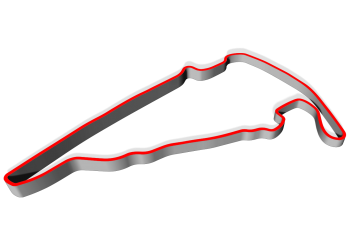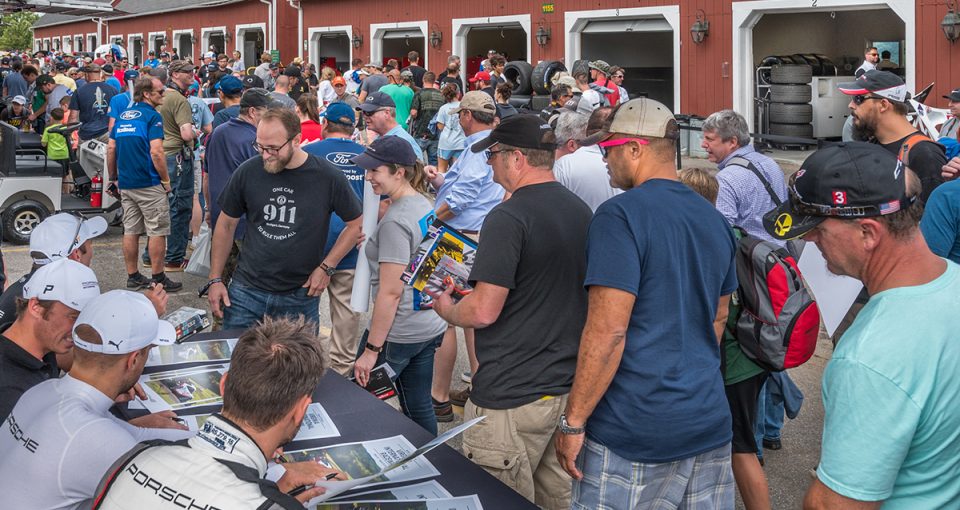
VIRginia International Raceway

Gallery
Track History
The Beginning of Road Racing
The story goes that automobile racing began just a few hours after the second car was built. In fact, the first automobile race took place in France in 1894, from Paris to Rouen. The first American race took place the following year, a round-trip race between Chicago and Evanston, Ill.
In the early 1900′s, road racing in America was staged on public roads, following the trend established in Europe at the turn of the century. The Vanderbilt Cup and the American Grand Prize were the two premier events of the time, and the most famous races were held in Long Island, N.Y., Savannah, Ga., Milwaukee, Wis. and Santa Monica, Calif.
Soon road racing became overshadowed by oval-track racing and it wasn’t until after World War II that organized road racing would become popular again.
Thanks to America’s post-war prosperity and enthusiasm, as well as the influx of sporting automobiles from Europe, such as MG, Jaguar, Ferrari, Maserati and Alfa Romeo, road racing quickly gained popularity and momentum. The Sports Car Club of America, founded in 1944, paved the way for the sport with its first race at Watkins Glen and later at similar tracks in Bridgehampton, N.Y. in 1949 and Elkhart Lake, Wis., Palm Beach Shores, Fla. and Pebble Beach, Calif. in 1950.
1957: VIR Opens
In 1955, a group of North Carolina car enthusiasts began their search for a possible racetrack location. They soon found the perfect site on the state line on land owned by the Foote Family and VIRginia International Raceway opened for business in August of 1957. The group leased the property as Sports Car Enterprises. VIR’s first official event was an SCCA race that attracted stars like Carroll Shelby, Carl Haas, Bob Holbert, Augie Pabst, Bob Grossman, Don Yenko, Dr. Dick Thompson, Walt Hansgen and Bruce Jennings. Shelby, who would later go on to worldwide fame by winning the 24 Hours of Le Mans in 1959 and creating the iconic Cobra sports cars in the early 1960s, won that first feature race at VIR in a Maserati 450S.The lconic Texan uttered a quote about the track that is remembered to this day, “one lap at VIR is like a hundred at Watkins Glen.”
VIR’s Early Years
As one of the first permanent American road racing tracks, VIR soon became a fixture on the SCCA circuit and a favorite among racers due to its high-speed straights, challenging turns and dramatic elevation changes. However, being located in the heart of stock car racing country, VIR wasn’t able to attract the big road racing crowds like those enjoyed by Watkins Glen and Elkhart Lake.
As a result, Sports Car Enterprises was forced to relinquish its lease on the Foote family’s property in 1959. Danville’s Colonel Paul Rembold took over the lease and the track fell under the control of the Civil Air Patrol. Colonel Rembold and his track manager Henry Wallace were more successful in the operations through the 1960s, attracting thousands of fans to VIR’s sports car, motorcycle and kart races.
Among the highlights was the fourth-ever SCCA Trans-Am race in 1966, won by Tom Yeager and Bob Johnson in a Ford Mustang over a field that included NASCAR stars Richard Petty, David Pearson, Curtis Turner and Wendell Scott. Additional memorable races include the first-ever IMSA GT race in 1971, won by Peter Gregg and Hurley Haywood in a Porsche 914-6 GT, and a return engagement by IMSA in 1972, also won by Gregg and Haywood in a Porsche 911S.
The track fell on hard times in the early 1970s. Combined with the fuel crisis of 1973, that spelled the end for VIR. The track was closed following an SCCA endurance race October 13, 1974.
The Rebirth of a Legend
VIR reverted to farmland for 25 years until 1998 when investors Connie Nyholm and Harvey Siegel decided to leave their careers in New York real estate and resurrect VIR. Their vision for the weed-infested, overgrown facility was more expansive than anyone could have imagined. Reopening in 2000, the historic track was renovated to become a world-class road racing circuit repaved and widened, while still following the track’s original centerline. In addition, Nyholm and Siegel transformed VIR into America’s first “Motorsport Resort,” a unique combination of racetrack, lodging, dining, spa, skeet shooting, pistol, and rifle ranges, karting and more.
Within two years of reopening, VIR began hosting the top professional sports car and motorcycle racing series in America, as well as welcoming back the amateur racers of the SCCA, whose North Carolina Region was thrilled to have their “home track” back.
In early 2013, Siegel retired from ownership, and Nyholm became one of the only female majority owners of a racetrack in the country. Under her guiding hands, VIR has received international acclaim as one of the world’s most beautiful and challenging circuits, and continues to push the envelope of how a racetrack is viewed.
Prior to the start of the 2014 season, Nyholm once again led the charge in initiating several updates at VIR including repaving the track’s Full Course for the first time since 1999, widening the track by six feet at several locations to allow easier passing, moving the start and finish line to just after pit row for better viewing for spectators, and paving the North Paddock to ensure an even and smooth surface for fans and drivers alike.




